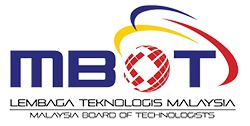Sustaining And Managing Ships’ Historical Data Through Digital Twin Alternatives
Keywords:
Ship’s Historical Data, Data Management, Digital Visualisation, Hull Integrity ManagementAbstract
This paper outlines the views for sustaining and managing floating structure information, exclusively in dealing with hull integrity through digital model (DM) and digital shadow (DS). The gains of utilising DM and DS are highlighted, covering the economic cost of development, operating and maintenance, time management in tracing ships' historical information for operation purposes and resource strategy in project planning. While most of the major industry players intended to invest in Digital Twin (DT) due to the push of Industry Revolution 4.0 (IR4.0), micro-small-and-medium enterprises (MSME) were left behind due to either a lack of capital in acquiring DT technologies or a lack of resources in developing the system. Also, there is the risk of not receiving a positive return on investment (ROI) when investing in DT, as the price of DT is high due to the high order with fewer service providers. The types of technology and practical applications covering all ship life cycle phases, from shipbuilding to ship operation and ship decommission through utilising DM and DS, are highlighted. Besides, existing DM and DS applications and strategies used by other industries were examined and suggested in the paper; ergo, it could be used as an innovation repository that could be improved for maritime engineering applications. Although DM and DS applications require human intervention, the potential benefits when combining the features of intelligence tools and human-in-the-loop (HITL) could be remarkable due to the tool's flexibility, expandability, and accessibility.





